It’s been a while, I know. I’m sorry. No excuses, just got a lot going on. Hope you enjoy this.
There’s a play midway through the second quarter of the Spurs’ blowout win over the Hawks that illustrates the difference between the two teams and the reason Atlanta’s offense always feels like far less than the sum of its parts. Well, there were many plays, but let’s focus on just this one to start.
DeMar DeRozan came off a pick-and-roll with Jakob Poeltl to his right and noticed John Collins switched onto him. He slowly walked the ball into the right corner and turned to face Collins as he pressured his left hip. DeRozan gave one hard dribble to his right, crossed back to his left, and instantly whipped a crosscourt pass to rookie Devin Vassell for an open three on the left wing.
That’s what happened if you only tracked the ball.
The key is what happened off it. As DeRozan sauntered to the corner, Vassell looped from the left wing to the top of the key. Kevin Huerter, Vassell’s man, came with him.
But when DeRozan dribbled hard to his right, Vassell faded back toward his initial position on the left wing. That’s because Poeltl, who saw the other Hawks players shift their eyes toward DeRozan, slid just in front of Huerter to block off his potential path for recovery.
By the time DeRozan took that second crossover dribble to the middle, he knew that all this had happened. If he passed the ball to the exact right spot at the exact right moment, Vassell had an open three. The crosscourt pass was just fast enough to beat Huerter’s recovery, and Vassell drained the shot.
Who deserves the most credit for that Spurs bucket? Is it DeRozan for making the actual pass? Is it Vassell for moving into position, being ready to shoot, and actually making the well-contested shot? Is it Poeltl for setting the flare screen once Collins switched onto DeRozan? Is it actually Keldon Johnson, who quietly cut through from the opposite wing so Vassell could replace him?
The answer is all of them and none of them at the same time. This is San Antonio’s offensive ecosystem, forged over many years and embraced by the current Spurs players. It requires all sorts of leaps of faith to happen. Faith from Vassell that his cut might pay off. Faith from DeRozan to pass up his own isolation scoring opportunity to deliver the pass. Faith from Poeltl to lay his body on another player instead of cutting to score himself. Faith from everyone that Vassell would be ready to knock the shot down and could fire it with confidence. Most of all, it requires faith from all involved that their efforts were worth it even if none of them actually led to a shot attempt.
Consider the many ways this sequence could have been short-circuited. What if Vassell doesn’t cut to the top of the key and then back to the wing? What if DeRozan, who was scoring at will in the game, exhausted every avenue to score on Collins himself — or even just one more avenue — before making the pass? What if Poeltl doesn’t slide in to set the flare screen at the precise moment necessary? What if Johnson and DeJounte Murray, the two Spurs positioned in the opposite corner, stand still behind the three-point line instead of exchanging positions? And what if Vassell, due to a lack of confidence, under-preparation, and/or too many delusions of individual grandeur, does something other than shoot immediately despite Huerter closing out hard on him? When you think about it, that’s a lot of stuff to coordinate to even get a OK shot attempt off.
But the Spurs connected all those dots. They did so because each was one part of a virtuous cycle that added up to a team bucket. And while the Spurs have more of an institutional reputation for this sort of thing, the truth is that most good NBA teams now drill, emphasize, and execute sequences like this. They get buckets using the combination of a critical entry point to draw attention, a top player willing to give the ball up early, and a collection of role players who occupy the rest of the defense’s attention with a lot of little movements.
Alas, one team that doesn’t is the Atlanta Hawks.
While the Spurs quickly cycled from sequence to sequence, with each player building on a small advantage, the Hawks too often ran their offense like a to-do list, as if if they needed to finish one task before moving on to the next. Their off-ball players too often stood still, and their on-ball players — usually Trae Young, which we’ll discuss in a minute — kept trying to score on their own first and only looking to pass after that door was sealed. It’s not like the Hawks didn’t move at all or never passed the ball. It’s more like they only did it as a reaction to the previous sequence instead of anticipating the next few steps.
Atlanta is down to 16th in the league in points scored per 100 possessions, which seems hard to believe given the team’s shooting talent. A lot of that talent has been injured, but that’s still a lower-than-expected number for a team expected to be an offensive powerhouse this season. It’s also happening despite Young matching his numbers from last season, the Collins/Clint Capela combination working effectively, DeAndre Hunter emerging before his recent injury, and Huerter flashing some additional playmaking chops. Individually, many key Hawks look fine. Collectively, it’s not quite adding up.
The reason is that the Hawks don’t display the sort of movement, spacing, and togetherness required to build up those little offensive advantages they create. That’s due in part to Young’s ball-dominance. Only Luka Doncic controls the ball for more seconds on average each possession, and only Doncic and Damian Lillard exceed Young’s average seconds per touch among qualified players.
But those teams at least find ways to leverage their star’s ball dominance into easier opportunities for teammates. The Mavericks are eighth in the league in drives per game and third in score percentage on those plays. Portland’s near the bottom of the league in drives, but rank second in conversion percentage, first by a mile in pull-up shooting points, and also feast on the offensive glass. The Hawks are nowhere near the top in any of those categories despite having Young. They’re bottom five in points off drives, last in shooting percentage on those sequences, bottom 10 in catch-and-shoot points and percentage, and somehow only 19th in pull-up shooting points (and even lower in pull-up shooting percentage). They have similar raw materials to those two teams, but can’t mix them together properly.
Who’s fault is that? This is where we get into some challenging chicken-vs-egg questions.
One has to wonder if the coaching staff is properly drilling the sort of scripted cuts that lubricate the best offenses. Too many Hawks sets begin the same way, with Young running off a double screen way up top while the two wings chill in the corner. Spacing is important, but the Hawks too often make themselves easy to guard by standing still.
When the Hawks players do cut, they often do so too late. This Cam Reddish cut is well-intentioned, but it would be even more effective if it came before his man double-teamed Collins in the post rather than after. Waiting allows the Spurs to anticipate the pass and pick it off.
There are many other times when the Hawks ball-handler — usually, again, Young — lacks the precise passing lane to deliver the ball to a teammate without fear of it being picked off. The Hawks do a poor job of shifting ever so slightly to present the sort of moving targets that even well-positioned defenses struggle to track. There’s no specific stat for this, but I suspect the Hawks lead the league in “potential passes not thrown.”
One also has to wonder if the two Hawks big men can do more to shift the ball from side to side. I noted Collins’ struggles in this area before the season, but to be honest, he’s not being put in an ideal position to do so. Why not pass the ball back to him here so he can roll into a dribble handoff with Kevin Huerter on the opposite side?
This leads us back to the elephant in the room: is Trae Young too selfish? From one perspective, this question is absurd. Young is second in the league in assists, and not because he gets a bunch of cheap ones. He possesses the deadly combination of spectacular court vision and remarkable biomechanics that allow him to look off help defenders from many different angles. He might also be the best lob passer in the league, which Collins will surely miss if his long-term future is elsewhere. (He didn’t sign a contract extension and periodically appears loosely in trade rumors).
But for someone who can seemingly make any pass, Young sure has a habit of only seeking out the ones that directly lead to a shot. Nearly 21 percent of his passes are assists, second only to (ironically) DeRozan. Whereas other great passers deliver the ball early in anticipation of the defense’s coverage, Young has a tendency to exhaust his scoring avenues and only then look to find a teammate. It’s as if he believes he has to draw the defense all the way to him before exploiting Atlanta’s numbers advantage.
His lack of size is a factor, but not the only one. It’s true that taller passers like Doncic can quite literally see the whole floor easier. At the same time, Young too often dribbles himself into spots that cut off his vision. Instead of veering all the way to the baseline to make the pass to Huerter in the corner himself, he’d be far better off stopping (or passing on the move), throwing the ball back to the open Collins on the wing, and letting him swing the ball to the corner.
Young might not get the assist in that scenario, but he would be exhibiting far more trust in his teammates.
Ah yes, trust. In many ways, the debate over Young’s ball-dominance circles back to that critical concept. The only way Young makes that pass is if he trusts his teammates enough to relinquish some direct control over the play’s outcome. That trust is easier to accept if he also trusts the uncertainty that comes with throwing a pass that could be deflected or intercepted. At the same time, one could also argue that the Hawks’ lack of off-ball movement is itself a reflection of their lack of trust in Young making the less glamorous passes that don’t directly lead to assists or show up in highlight packages.
There’s some truth in both perspectives. Maybe Young doesn’t trust his teammates and/or fears the possibility of a turnover. Maybe Young is simply too small to see those openings. Maybe the other Hawks are indeed doing a poor job of cutting instinctively to give Young those passing lanes. Maybe they’d be better at that if they got to touch the ball every so often. Maybe they just lack that specific brand of basketball IQ. Maybe the coaching staff is doing a poor job facilitating those sorts of on-court interactions. Maybe Young is right that the Hawks’ best chance comes if he to control the ball all the time.
Regardless of the cause, the end result is a vicious cycle that makes everyone on the team worse. On the Spurs and most other teams, each small, selfless on-court act builds into a series of selfless acts that result in good shots and empowered teammates. In Atlanta, on the other hand, the absence of said selfless acts too often leads its offense down a dark path that forever controls its destiny. This is how some teams function as more than the sum of their parts and others as far less.
At this point, it doesn’t really matter which Hawks party takes the initiative to solve the larger problem. They just need someone to go first.




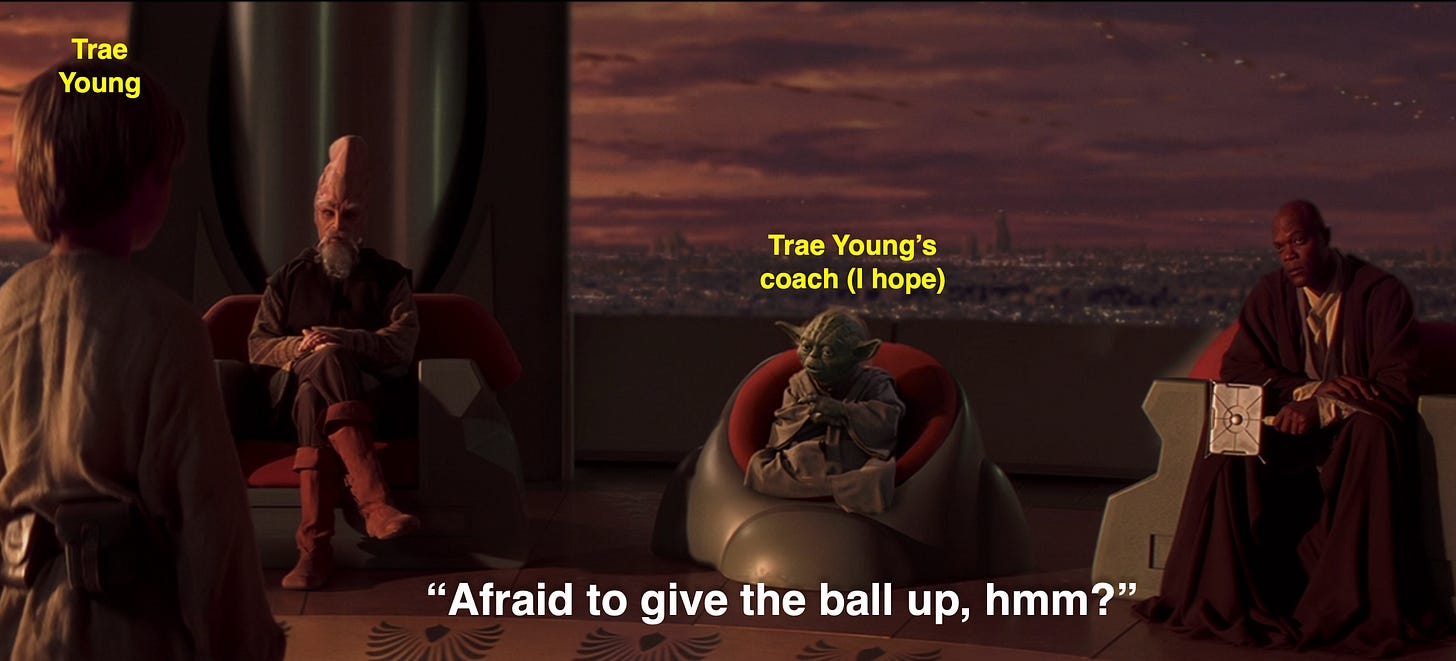
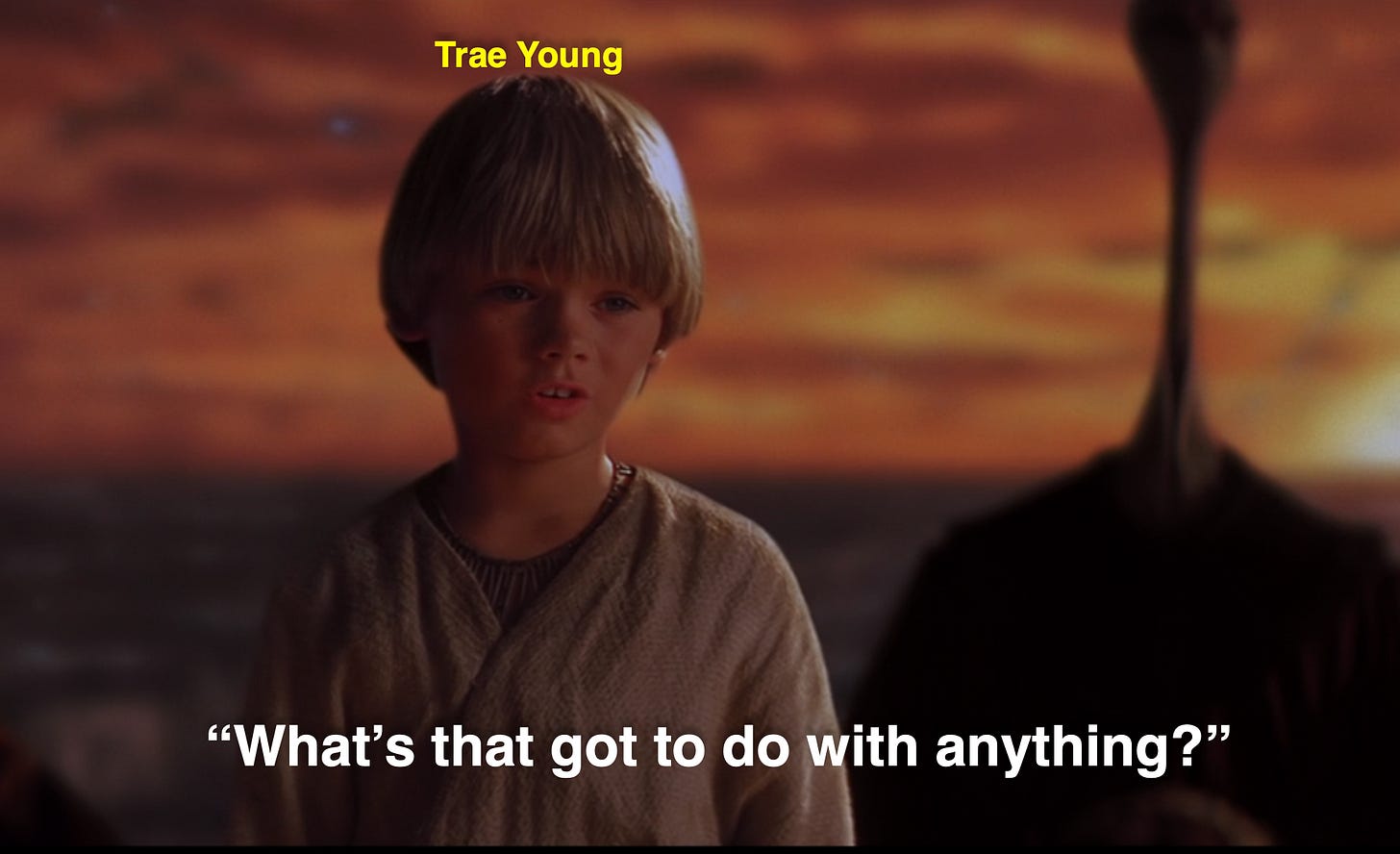
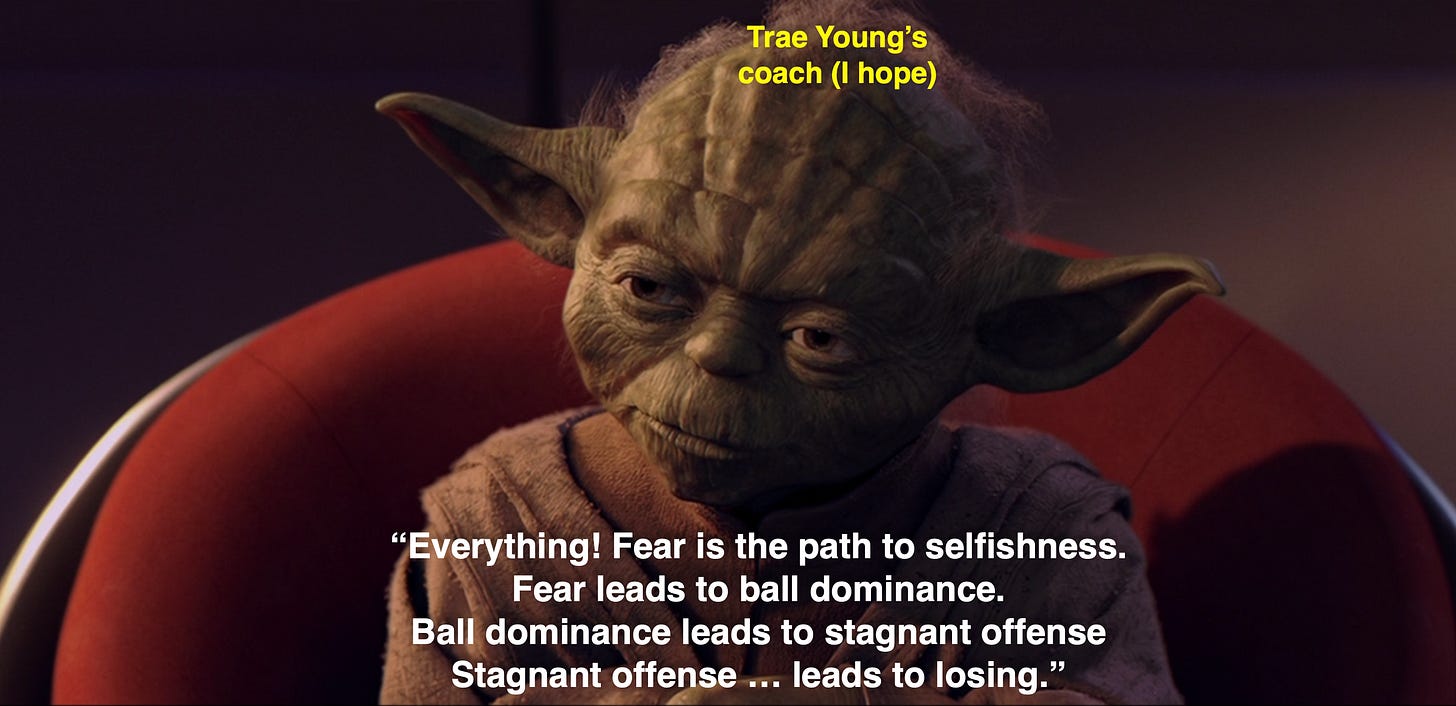
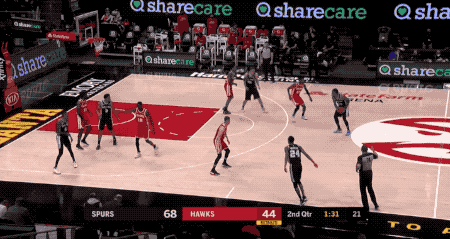
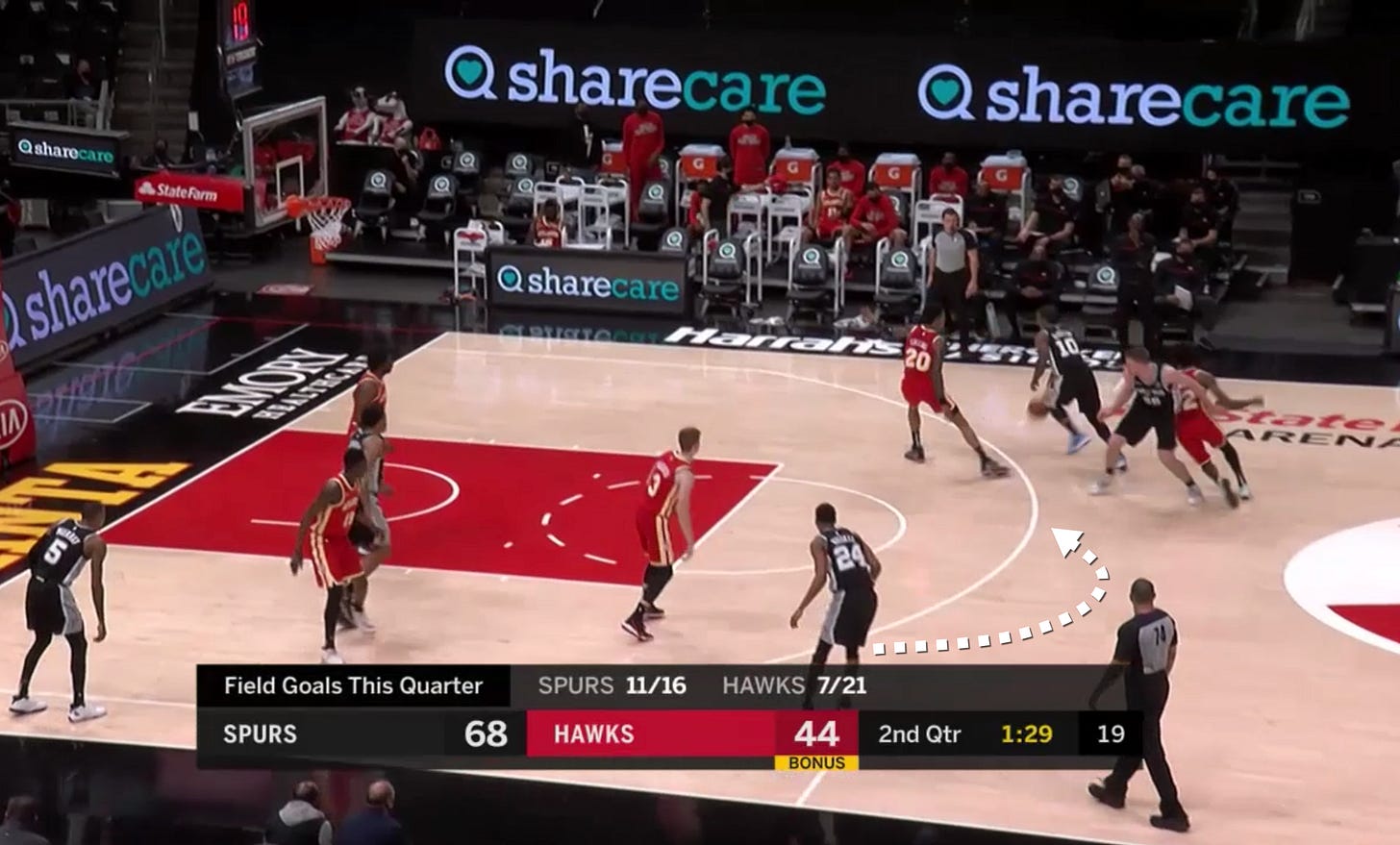
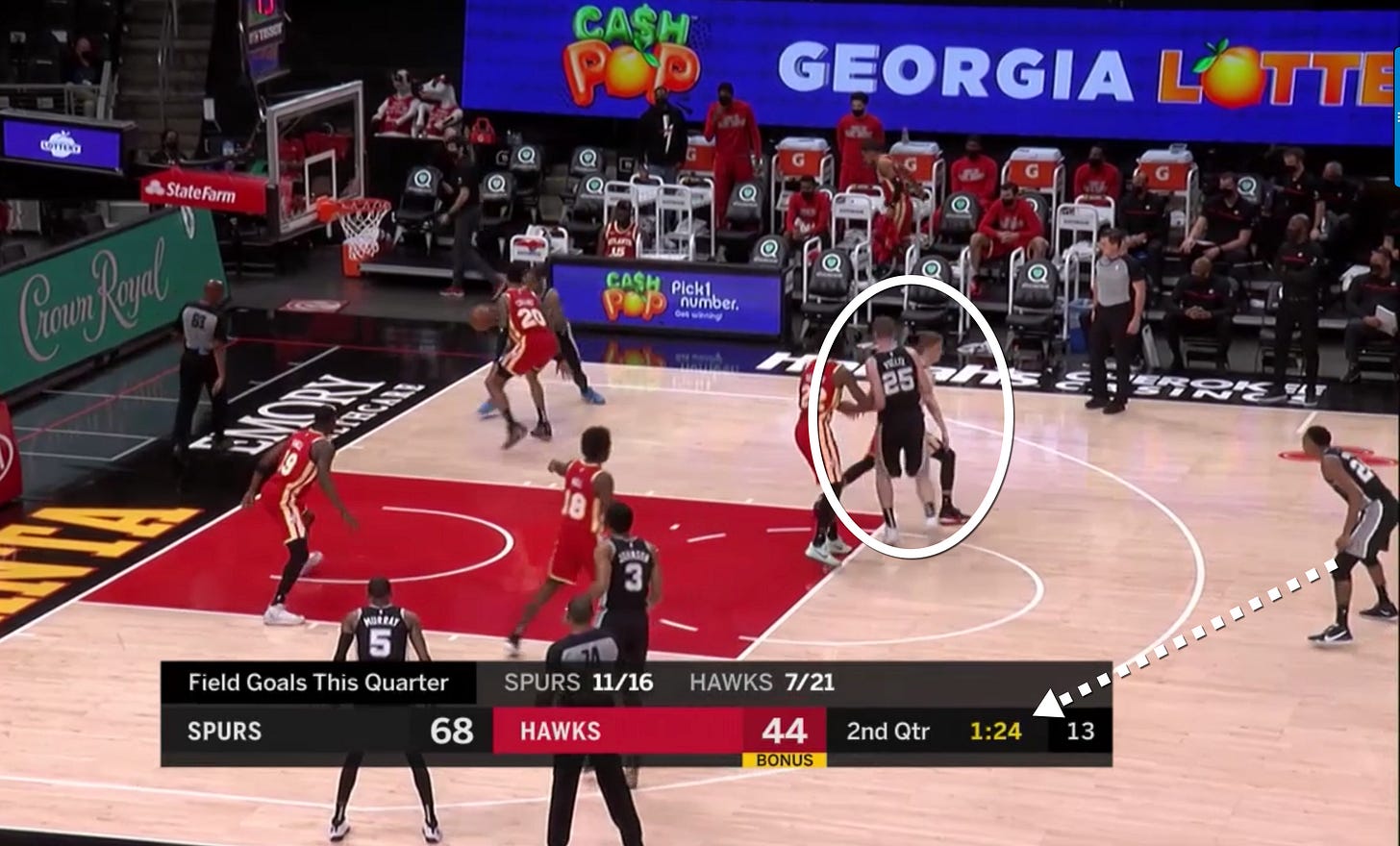
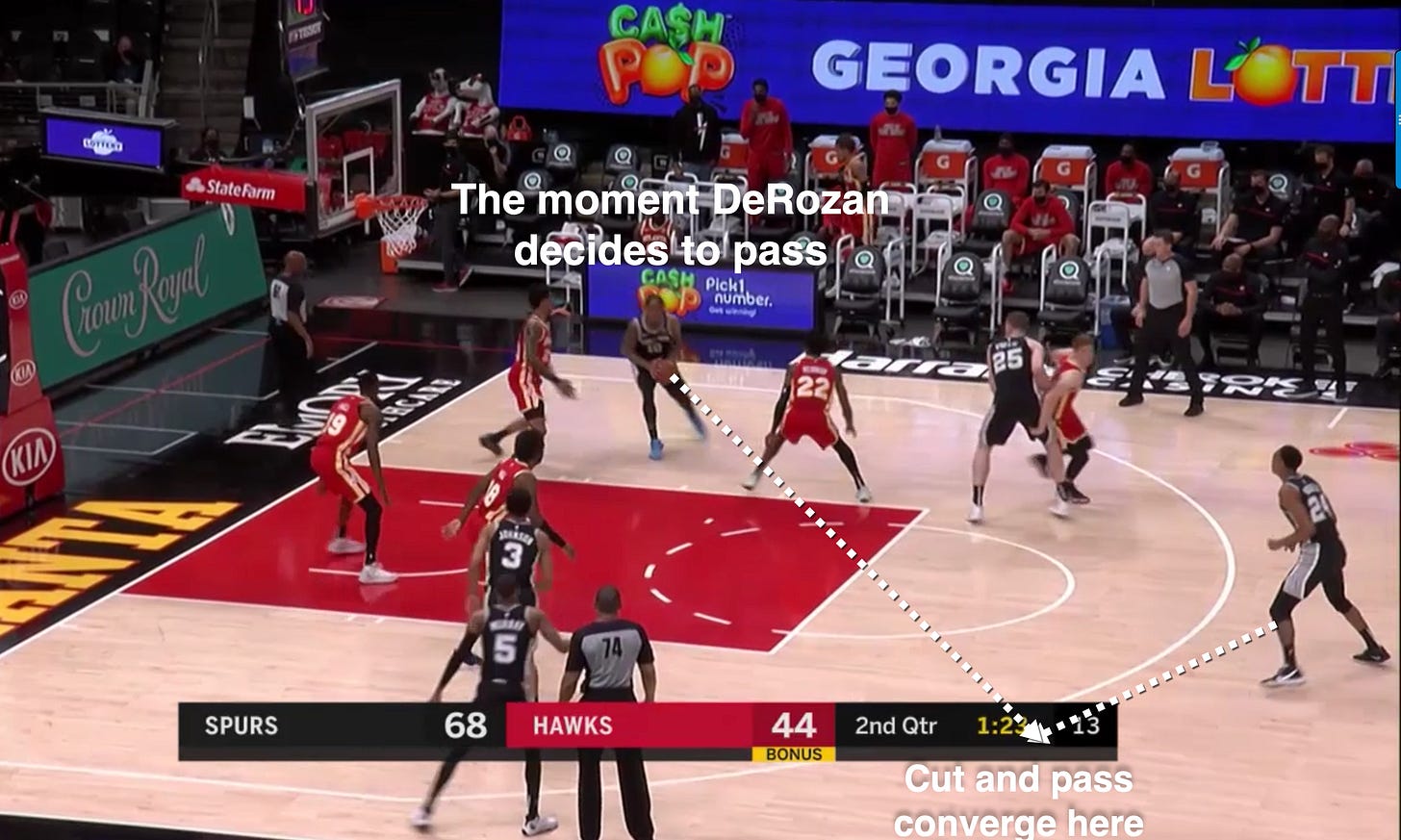
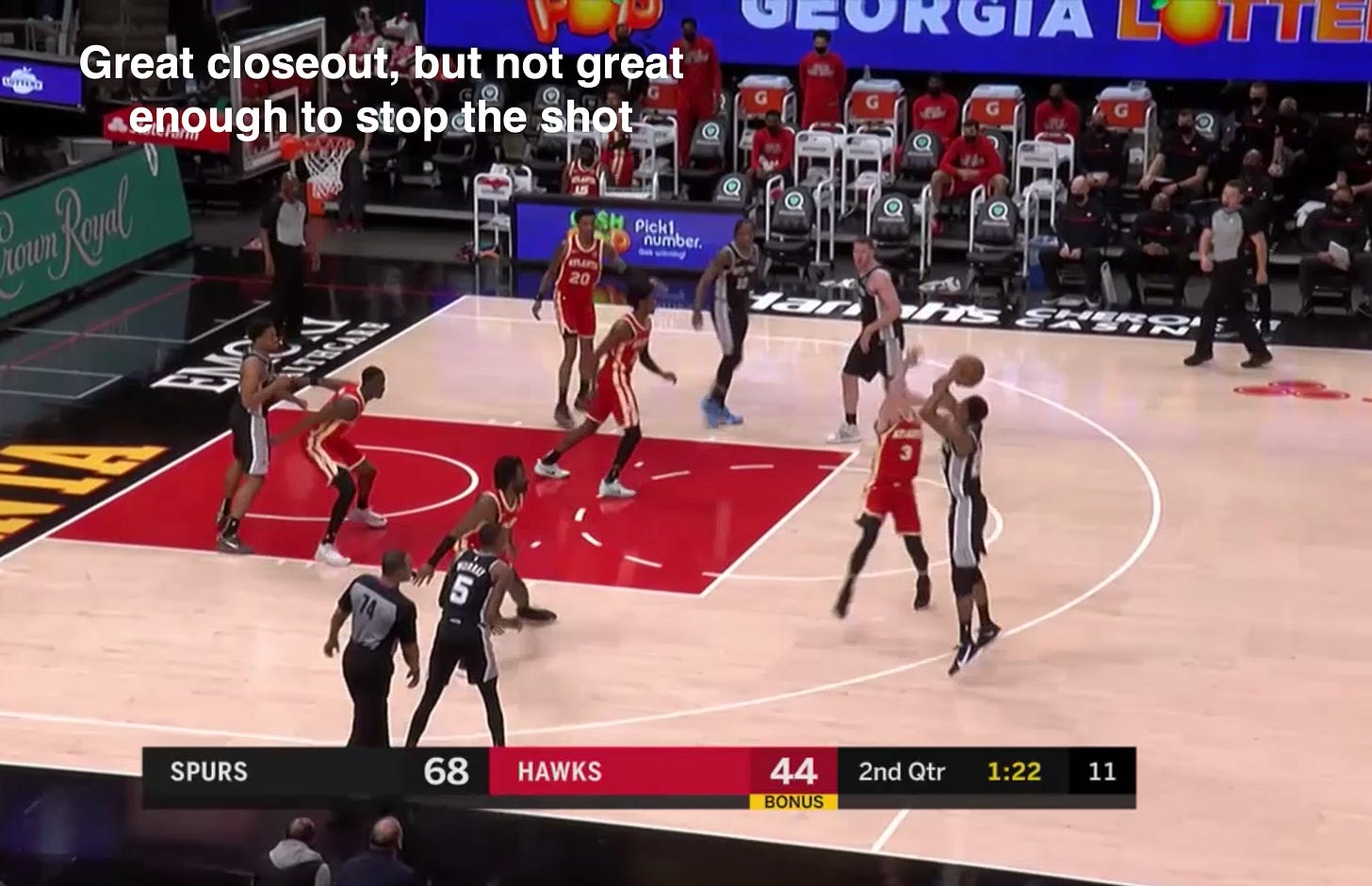

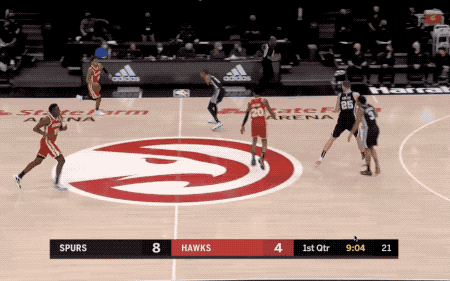
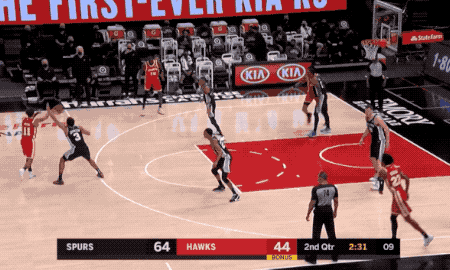
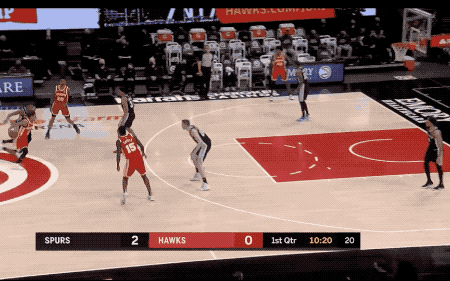
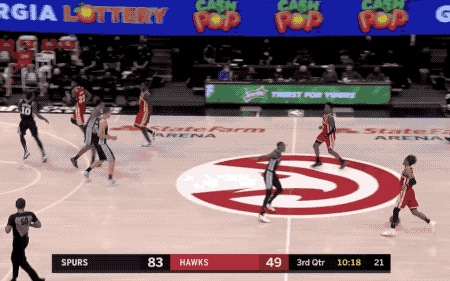
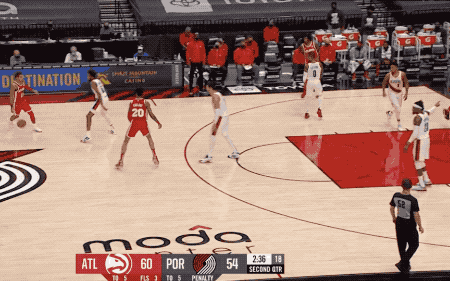
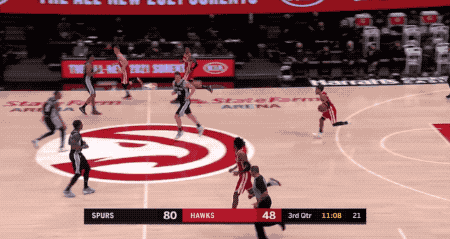
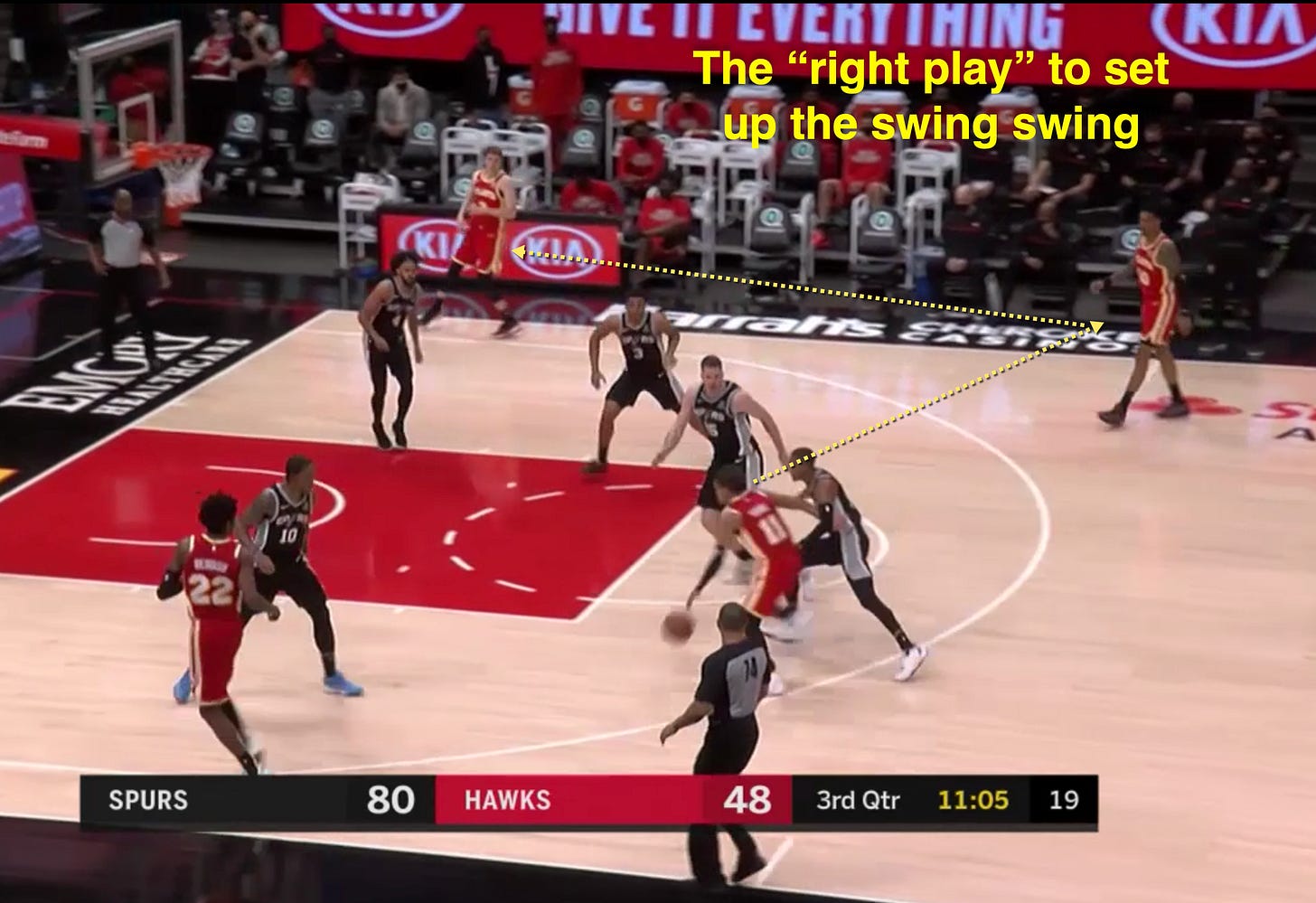
Not a hater but you have to add lack of Defense to the Young package. Clear liability at the other end of the court. Very few matches favor Young. Teams are exploiting this weakness going right at him. If he averages 24 on one end, how many does he give up on the other
Love the breakdown!! I've been following your work since the bullets forever days and I just found this column. Keep up the great work!